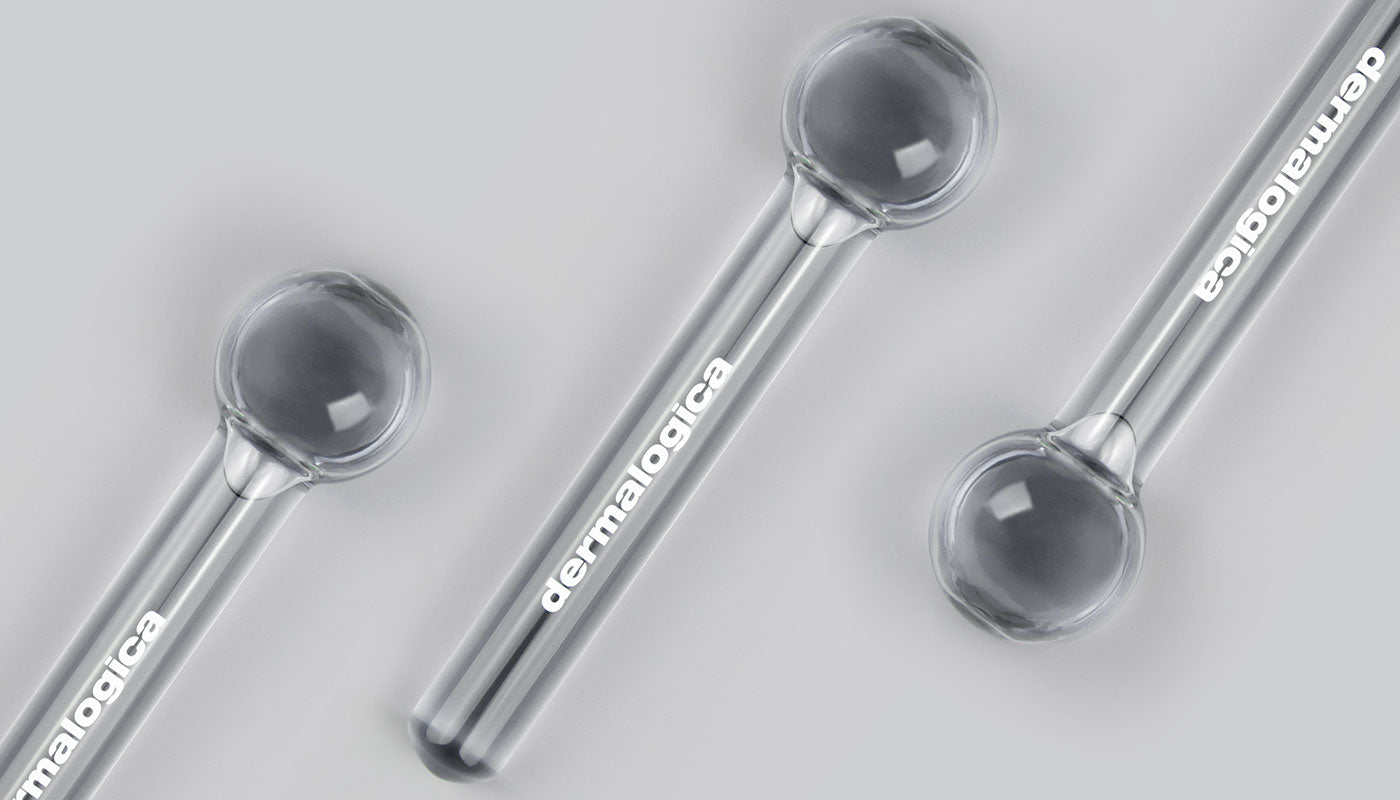3 mins read
Skin Icing – How To Safely Include Cooling Therapy Into Your Regimen


Skin icing is a skin care trend that’s gained popularity over recent months, but does rubbing an ice cube over your face or dunking your face in a bowl of iced water actually benefit your skin?
Our Education Manager Victoria shares some tips and precautions for including cooling therapy in your skin care regimen.
What is skin icing?
The trend for skin icing that you see on your socials ranges from literally rubbing an ice cube over your face to putting your face into icy water or using a tool, such as a roller or globe that’s really cold. Like many skin trends, some of the touted benefits of skin icing are questionable and not all skins will be suitable for it.
How does skin icing benefit the skin?
We’ve probably all reached for an ice pack to help reduce pain and swelling. Using something really cold on the skin causes blood vessels to constrict away from the skin’s surface helping to reduce redness and swelling. This is temporary but beneficial in aiding the healing process. Putting ice on the skin will help reduce puffiness – great for tired eyes and if moved over the skin in the right way, can help aid in lymphatic drainage and removal of toxins. If you have heat in the skin, it can also help to reduce redness and the look of angry breakouts. More questionable benefits include reducing wrinkles and making your pores smaller. We’ve not seen any credible evidence of this.
Use a cool facial tool over an ice cube
When it comes to including cooling therapy in your skin care regimen, we would recommend a facial tool over an ice cube. An ice cube is literally freezing and thus there’s a danger, if left on the skin too long to cause damage. A cool globe or gua sha tool left in the fridge (not the freezer) or placed in cool iced water delivers the depuffing and desensitising effects in a safe and controlled way. Plus, an ice cube can pose hygiene issues compared to a tool that can be cleaned after use. Ice cubes also melt! Having freezing cold water running down your face and neck is not pleasant and if you have applied serums or moisturisers first, they’re getting washed away!
What skins should avoid icing?
Skin that is vulnerable, highly irritated or with a damaged barrier should avoid skin icing. Skin conditions such as Rosacea and Eczema fall into this category. Whilst icing the skin reduces redness, extreme fluctuations of temperature on a compromised skin may trigger a negative response. This is also why a cool tool is better than frozen ice. Skins with mild redness, puffiness and a tired, dull complexion will benefit the most.
How to incorporate skin icing into your regimen
Carry out your cleansing routine and a gentle exfoliation. Apply your serum and/or moisturiser so you have a little slip on the skin and begin using your cool facial tool in light strokes working from the centre of the face out towards the hairline. For areas holding heat like flushed cheeks or an angry breakout, gently hold to the tool on the area for a few moments. Complete your regimen as usual and clean over your tool with an anti-bac wipe. If storing your tool in the fridge, place inside a Tupperware container with lid.
Watch our professional skin therapist demonstrate how to use colling ice globes for best results.
Dermalogica products to keep in the fridge
Another way to introduce the benefits of skin cooling is to keep certain products in the fridge for a cooling and refreshing application. Our top picks are;
For personalised advice on your skin, chat live to one of our skin therapists now or book for a free online consultation here.






